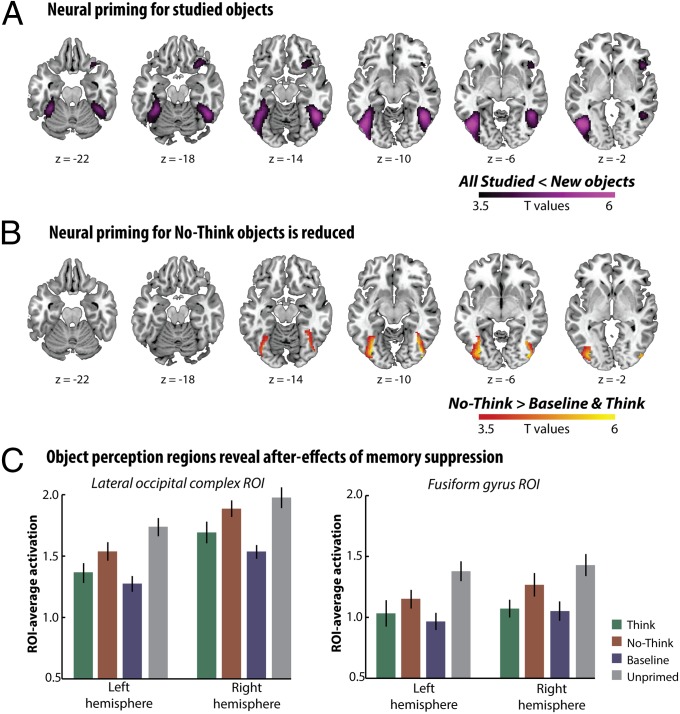Fig. 3.
Brain activity observed during the indirect influence of visual memories on perception. (A) The fusiform cortex and the LOC showed less activation during perceptual identification of studied, compared with new objects (neural priming), illustrating the benefits of object memory on neural processes contributing to perception (SPM, thresholded at P < 0.001 uncorrected, for visualization). (B) Both the LOC and the fusiform cortex show greater activation during the perception of suppressed (i.e., no-think) objects, compared with other studied objects, reflecting the degraded benefit of memory on perception. The SPM showing no-think activation greater than baseline and think activity is masked using the main effect of priming. (C) In independently localized ROIs for object-responsive regions of the visual cortex (LOC and fusiform cortex), neural priming for studied objects compared with new objects is partially reversed for no-think objects. Thus, neural activation markers of perceptual memory in the visual cortex were disrupted by memory suppression. Error bars represent within-participant SEs.

